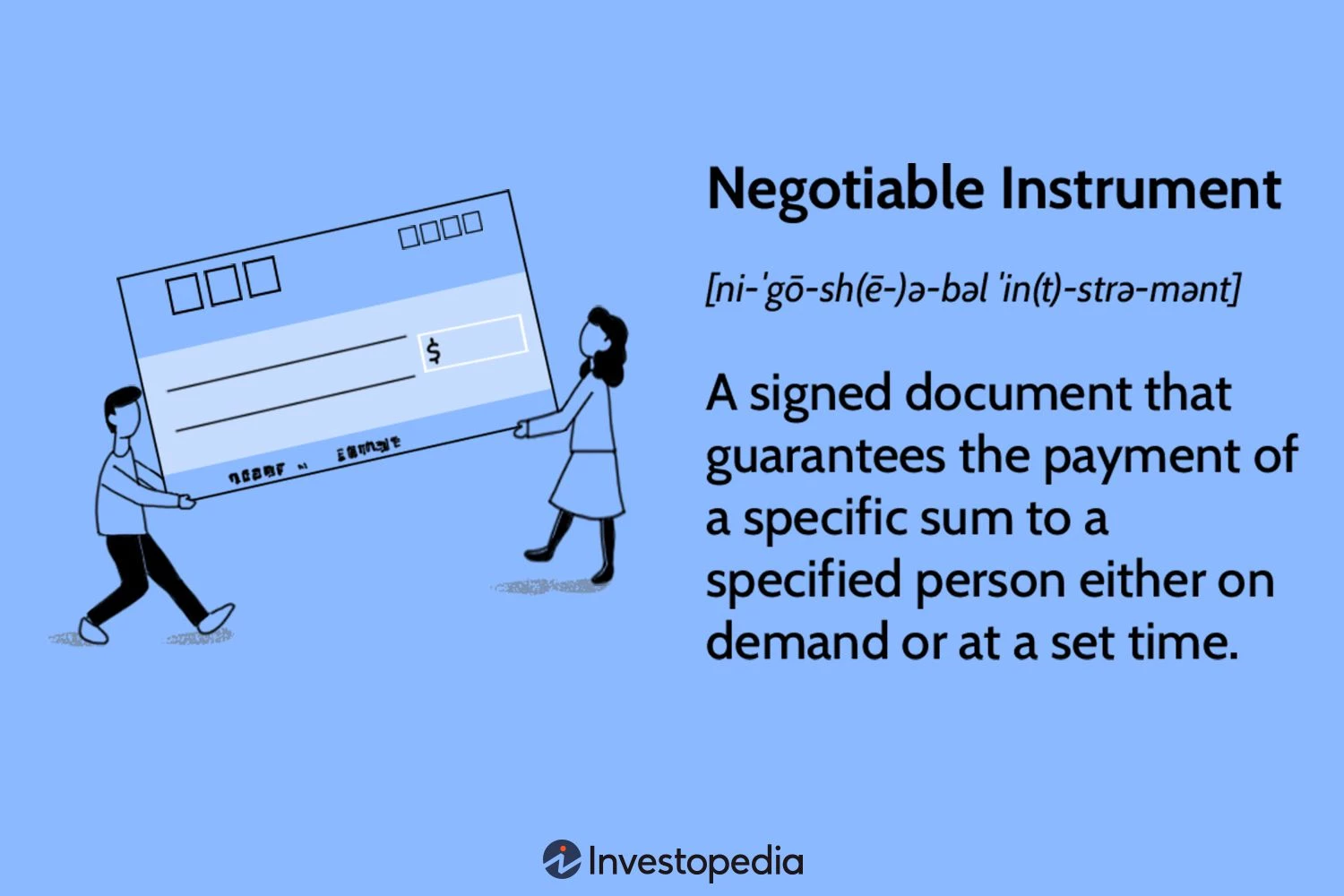What Is a Negotiable Instrument?
A negotiable instrument is a formalized IOU, a signed document that guarantees payment to a specific person or assignee at a future date or upon demand. Essentially, it is a transferable promise to pay a sum of money.
Common examples of negotiable instruments include personal checks, cashier’s checks, money orders, certificates of deposit (CDs), promissory notes, and traveler’s checks. The recipient of the payment, known as the payee, must be identified on the instrument. These instruments are transferable and can be traded in secondary markets.
### Key Takeaways
– A negotiable instrument is a signed document ensuring payment to a specified person or assignee.
– These instruments are transferable, allowing recipients to access funds as cash and utilize them as preferred.
– Examples of negotiable instruments encompass checks, money orders, and promissory notes.
—
Understanding Negotiable Instruments
Negotiable instruments are transferable documents allowing holders to access funds as cash or for various transactions. The specified fund amount must be paid in full, either upon demand or at a designated time. These instruments can be transferred from one party to another, providing the holder with complete legal ownership.
These documents only promise the payment amount listed and do not contain any other obligations from the issuer. Additionally, no other requirements or stipulations can be imposed for the bearer to receive the specified amount.
For an instrument to be considered negotiable, it must be signed by the maker, also known as the drawer of funds—the individual or entity issuing the document.
The term “negotiable” signifies the document’s transferability, whereas “non-negotiable” implies a fixed document not subject to change.
—
Examples of Negotiable Instruments
One prevalent negotiable instrument is the personal check, serving as a draft payable by the payer’s financial institution for the specified amount. Similarly, a cashier’s check fulfills the same function, with funds set aside for the payee before issuance.
Money orders, resembling checks, may or may not be issued by the payer’s financial institution. Often, cash must be provided upfront before issuing a money order, which can then be exchanged for cash by the recipient.
Traveler’s checks function uniquely, requiring dual signatures for a transaction. The holder first provides a specimen signature upon issue, followed by a countersignature when determining the payment recipient. Traveler’s checks offer increased security during travel, particularly in foreign countries.
Other notable negotiable instruments include bills of exchange, promissory notes, drafts, and certificates of deposit (CDs).
—
What Is a Negotiable Instrument Used For?
A negotiable instrument guarantees payment to a specific person or assignee, allowing the holder to access funds as cash for various purposes.
What Is the Benefit of a Negotiable Instrument?
A negotiable instrument is easily transferable, requiring minimal formalities and paperwork for ownership transfer. It can be passed by delivery or endorsement, offering great flexibility.
What Are the Two Kinds of Negotiable Instruments?
There are two primary types of negotiable instruments: orders to pay (drafts and checks) and promises to pay (promissory notes and CDs).
—
The Bottom Line
A negotiable instrument, such as personal or cashier’s checks, is a document affirming payment to a specific person or entity. These instruments are characterized by their transferability, enabling ownership transfer via simple delivery or valid endorsement. Common types include personal checks, cashier’s checks, traveler’s checks, money orders, promissory notes, and certificates of deposit (CDs).
